February, 1944
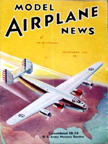
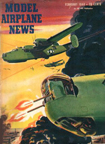
Consolidated B-24 "Liberator"
Model Airplane News Cover Art for February, 1944
by Jo Kotula
Click to Enlarge
When in 1939 Consolidated Aircraft Corporation began design of a bomber aircraft intended to be superior to the Boeing B-17, the company could never have imagined that more than 18,000 of these aircraft would be built (as the B-24A to -M for the USAAF and Liberator I to IX for RAF Coastal Command and Bomber Command). The aim of the design team was to achieve better load/range performance than that of the B-17, with a twin tail and high-mounted, high aspect ratio cantilever monoplane wing (the Davis wing, which was had been previously tested in the PB2Y "Corregidor" Flying boat (On the cover of the September, 1939 issue of Model Airplane News)
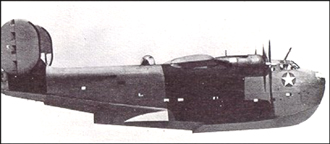

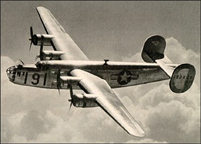
Consolidated "No. 31" XP4Y "Corregidor" and the B-24 "Liberator"
Davis Wing Patent No. 2,281,272
Click to Enlarge
Construction was conventional all-metal, but there were several innovations in addition to the new wing. For the first time on a large aircraft a retractable tricycle-type landing gear was introduced. The bomb bay was deep enough for bombs to be stowed vertically and wide enough to comprise two bays separated by a catwalk providing communication between the flight deck and rear fuselage. Instead of conventional bomb doors, which can affect flight characteristics when open, the bomb bay was closed by roller-shutter-type doors.
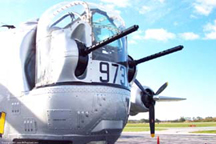
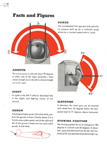
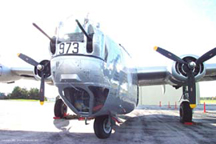
Consolidated Power Turret in the nose of the B-24 "Liberator"
Click to Enlarge
Initially, the B-24 was deficient in armament. Of particular note was the nose of the plane that only had one 30 caliber machine gun. German planes exploited this weakness by making frontal attacks. These deficiencies were remedied in part by the addition of the Consolidated power turret to the nose of the B-24. This was a version of the turret already in the tail that gave an ungainly look to the B-24's nose. The cover of Model Airplane news focuses on this turret.
In all, 18,482 B-24s were built by September 1945. Twelve thousand saw service with the USAAC. The Royal Air Force flew about 2,100 B-24s in 46 bomber groups and 41 squadrons; the Royal Canadian Air Force 1,200 B-24Js; and the Royal Australian Air Force (RAAF) 287 B-24Js, B-24Ls, and B-24Ms. Liberators were the only heavy bomber flown by the RAAF in the Pacific. Two squadrons of the South African Air Force based in Italy flew B-24s
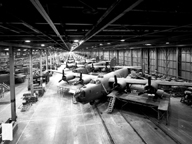
The Consolidated B-24 "Liberator" being Assembled at Willow Run
Click to Enlarge
American manufacturing technology was responsible for this massive output of aircraft. A gigantic plant, nearly a mile long at Willow Run was constructed to turn out B-24s on an assembly line just like automobiles. The site of the plant was a farm owned by Henry Ford. He had used the farm to provide employment for youths during the summer. Ford Motor Company, like virtually all of the United States' industrial companies, directed its manufacturing output during World War II for Allied war production.

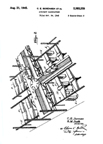

Charles Sorenson Design for the Assembly Line at Willow Run
Patent No. 2,383,225
Click to Enlarge
The firm developed the Willow Run site to include an airfield and aircraft assembly facility. The plant held the distinction at the time of being the world's largest enclosed "room." At its peak, in August 1944, Willow Run produced 428 B-24 aircraft, or almost 14 for each calendar day. An interesting feature of the Willow Run plant was a large turntable two-thirds of the way along the assembly line where the B-24s would make a 90° turn before continuing to final assembly. This arrangement was to avoid having the factory building cross a county line and so be taxed by two counties. The neighboring county's taxes were higher.
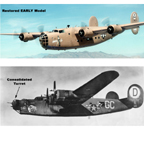
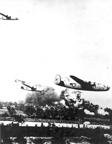
Photos of the Consolidated B-24 "Liberator"
Right: the raid on Ploesti
Click to Enlarge
Although the B-24 was deployed alongside the B-17 in Europe, and flew in Africa and the Middle East, its major contribution to America's wartime operations was in the Pacific, where it was first flown in action against the Japanese in January 1942. In Europe it is best remembered for bombing Rome on 19 July 1943 and for a low-level attack by 177 aircraft on the Ploesti oil refineries in Romania on 1 August 1943, a 4,345km round-trip mission from Benghazi in Libya, during which 57 of these eight-ten-crew aircraft were lost. The September, 1944 MAN cover memorializes the raid on Ploesti
Here is a video that shows many of the internal details of the Consolidated B-24 "Liberator", including that power turret:
Click Here for more information about the Consolidated B-24 "Liberator".

Click to go back and select another cover.
Counter for the Entire Site (not just this page..)
Home | About Lindy | Last Week's Reviews | Upcoming Events | 1940s Collecibles
The Guide - Establishments - Travel - Accessories
Music | Links | Photo Gallery | Extras | Contact